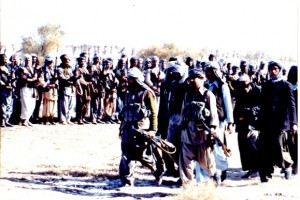Robert D. Kaplan’s famous 1994 Harper’s article, “The Coming Anarachy,” imagined a future of global scarcity, environmental disaster, overpopulation, crime and tribalism, with nations lacking genuine boundaries and central government control. It would be a vast divide of haves and have-nots. Some of it has proven true, some not. Kaplan’s most spot-on prognostication foresaw terrorist organizations operating without regard to borders, existing as their own sovereign nation across nations. An excerpt:
“Also, war-making entities will no longer be restricted to a specific territory. Loose and shadowy organisms such as Islamic terrorist organizations suggest why borders will mean increasingly little and sedimentary layers of tribalistic identity and control will mean more. ‘From the vantage point of the present, there appears every prospect that religious . . . fanaticisms will play a larger role in the motivation of armed conflict” in the West than at any time for the last 300 years,’ Van Creveld writes. This is why analysts like Michael Vlahos are closely monitoring religious cults. Vlahos says, ‘An ideology that challenges us may not take familiar form, like the old Nazis or Commies. It may not even engage us initially in ways that fit old threat markings.’ Van Creveld concludes, ‘Armed conflict will be waged by men on earth, not robots in space. It will have more in common with the struggles of primitive tribes than with large-scale conventional war.’ While another military historian, John Keegan, in his new book A History of Warfare, draws a more benign portrait of primitive man, it is important to point out that what Van Creveld really means is re-primitivized man: warrior societies operating at a time of unprecedented resource scarcity and planetary overcrowding.” (Thanks to The Electric Typewriter.)
Tags: Robert D. Kaplan

